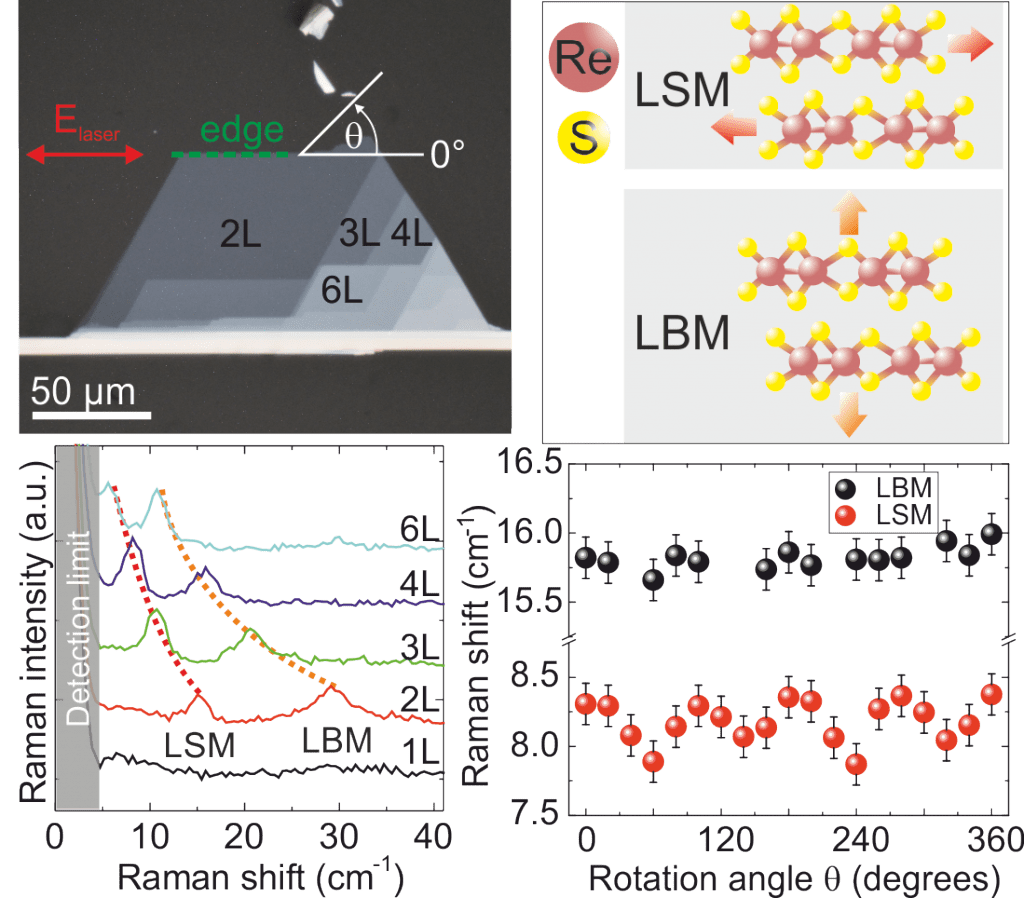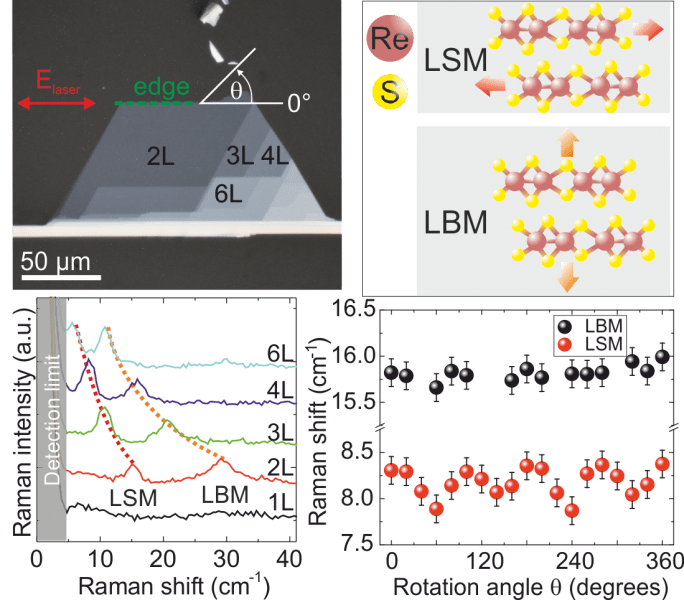Atomically thin transition-metal-dichalcogenides (TMDCs) have recently attracted a lot of research interest. Like graphene, they can be prepared as two-dimensional crystals by exfoliation. Unlike graphene, they are semiconductors with large band gaps, which make them interesting for potential optoelectronic device applications. While TMDCs based on group-VI metals like Molybdenum and Tungsten, such as MoS2 and WSe2, have been intensely studied in recent years, atomically thin crystals of TMDCs containing Rhenium, such as ReS2 and ReSe2, are a very new field of research. In these materials, the additional valence electron of the group-VII element Rhenium leads to the formation of in-plane Re-Re bonds, which distort the crystal lattice and reduce its symmetry compared to the group-VI-based TMDCs, resulting in anisotropic electronic and optical properties.
 A group of scientists at the University of Regensburg have studied the Raman spectrum of single- and few-layer ReS2 flakes in the ultralow frequency range. They were able to observe two Raman modes which are characteristic for layered materials: the interlayer shear (LSM) and breathing (LBM) modes, in which adjacent layers rigidly oscillate relative to each other within (LSM) or perpendicular (LBM) to the layer plane. The presence of these modes indicates that despite the reduced crystal symmetry, adjacent layers have a well-defined van-der-Waals coupling. Both Raman modes show large shifts to lower energy with increasing number of layers, and their intensity strongly depends on the laser polarization orientation with respect to the crystal axes. In remarkable contrast to other, higher-energy Raman modes, the energy of the LSM also depends on the laser polarization orientation, indicating that the in-plane shear modulus of few-layer ReS2 is highly anisotropic. These results demonstrate that ultralow-frequency Raman spectroscopy is a powerful tool for the study of few-layer ReS2 and may further the understanding of this novel two-dimensional crystal.
A group of scientists at the University of Regensburg have studied the Raman spectrum of single- and few-layer ReS2 flakes in the ultralow frequency range. They were able to observe two Raman modes which are characteristic for layered materials: the interlayer shear (LSM) and breathing (LBM) modes, in which adjacent layers rigidly oscillate relative to each other within (LSM) or perpendicular (LBM) to the layer plane. The presence of these modes indicates that despite the reduced crystal symmetry, adjacent layers have a well-defined van-der-Waals coupling. Both Raman modes show large shifts to lower energy with increasing number of layers, and their intensity strongly depends on the laser polarization orientation with respect to the crystal axes. In remarkable contrast to other, higher-energy Raman modes, the energy of the LSM also depends on the laser polarization orientation, indicating that the in-plane shear modulus of few-layer ReS2 is highly anisotropic. These results demonstrate that ultralow-frequency Raman spectroscopy is a powerful tool for the study of few-layer ReS2 and may further the understanding of this novel two-dimensional crystal.
The text is kindly provided by Tobias Korn

















